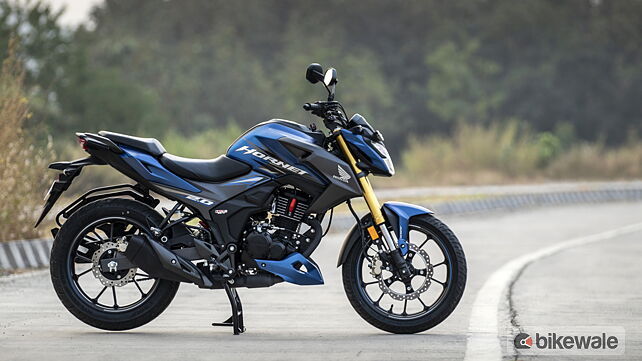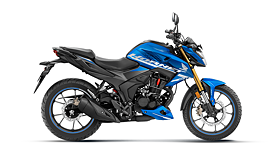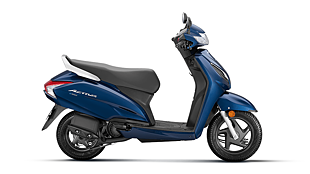Introduction

Say Hello to the new HondaHornet 2.0. It’s the larger displacement and better equipped successor to the now-discontinued CB Hornet 160R, but the overall platform is essentially the tweaked version of the CB190R sold overseas. For Honda, the version 2.0 serves two purposes. Firstly, it fills the wide displacement gap between Honda’s 160cc offerings and the CB300R. At the same time, it caters to the customers who wish to opt for something tad more premium than the X-Blade.
It took quite long for Honda to arrange for a media test unit of the Hornet 2.0. Nevertheless, we finally got to spend some time with the bike and rode it in the city, on the highway, and also carved some twisties around the mountains, only to bring you a detailed review of the motorcycle.
Quality

Get up close with the new Hornet and you’ll realise it is very well put together, with flush fitted body panels and top-notch paint quality all across. The switch gear exudes solidity and the buttons operate without any fuss. Furthermore, other bits like the instrument cluster, key fob and headlamp cowl appear neatly tucked. However, a few parts such as the underbelly cowl feel like they are made up of slightly substandard plastic.

As for the design, it is easy to tell that this Honda succeeds the Hornet 160R, thanks to a very similar stance and the large ‘Hornet’ badging on the fuel tank. And despite the hike in displacement, it doesn’t look larger in terms of dimensions. But there’s no denying that the styling has matured and it sports various elements which make it look more premium, such as the low slung and compact LED headlamp, golden upside down forks and sleek LED winkers. All in all, the Hornet 2.0 retains the aggressive visual appeal which has worked in the favour of its predecessor.
Comfort

The seat height of the Hornet is pretty accessible and hopping on it shouldn’t be a problem for most of the riders. Once in the saddle, you are in a commanding and sporty position, yet in a comfortable way. You sit with the arms outstretched, knees properly bent and upper body leaned over, but nothing too extreme to cause any discomfort. Even the seat is quite spacious and adequately cushy to be pleasant even on the longer rides. One of the admirable aspects of the Hornet is its low kerb weight of 142kgs and that makes moving it around profoundly effortless.
Performance

Coming to the heart of the matter, the engine of the hornet is a 184cc, single cylinder, air cooled unit which churns out 17.03bhp of power and 16.1Nm of torque. These numbers might not be extraordinary for this segment, but out on the road, it doesn't fail to impress.

As you get going, the Hornet starts picking up pace with vigour. The revs keep climbing linearly until 5,000rpm after which there's a pleasant shove of torque which lasts roughly up till 8,000rpm. The speed transitions are quick in the low and mid range of the rev band, which makes it enjoyable to ride, especially in the city. The engine feels relaxed and you can keep going even in a gear higher.
Another aspect that makes the city ride delightful is the profoundly light clutch and the slick gear box which has a long throw but shifts with minimal effort. Although false neutral was a rare occurrence.

Even at highway speeds, the Hornet doesn’t feel stressed as there are negligible vibrations, which creep in on the footpegs and handlebar only post 5,000rpm. Even the overtakes don’t require much planning. However, the highway cruisability would have been better, had there been a sixth gear. The charming engine character of the Hornet is complemented by a sweet humming sound, which is typical of a Honda.

Handling is one of the strong suits of this bike as the steering response is spot on and changing directions doesn’t require much of an effort. Filtering through busy traffic is literally a breeze. While it is nimble around tight turns, the long sweeping bends are handled with sheer stability too. This is also aided by the MRF Nylogrip Zapper tyres which we got to test only in dry conditions and experienced a fair amount of grip.

The ride quality of the motorcycle is not outright plush but you won’t end up with an aching back either. At slow speeds, the minor undulations send a slight jolt in the back but things never get too harsh. We were really impressed by the braking performance of the Nissin calipers. The front has gallops of bite and feel while the rear has the needed progression to avoid locking of the wheel. One of the downsides of the Hornet is that it comes with single-channel ABS only and dual ABS can’t be had even as an option.
Technology

And that brings us to features, a department in which the Hornet is just about average. It gets a full-LED headlamp but the illumination from this unit isn’t much useful. Then there’s a negative LCD console which shows vital information in a legible way and gets five-level brightness adjustment function.

What’s disappointing though is that it misses out on Bluetooth connectivity, a technology available in much cheaper offerings. However, the Hornet packs a couple of fancy bits like LED winkers, hazard light switch, metal pillion footpegs and tank-mounted key fob, which is usually found in bigger bikes.
Fuel Efficiency

Now, moving on to a very important question – how fuel efficient is Honda’s new offering. We are glad to report that our test recorded a mileage of 42.3kmpl, which is one of the highest in this segment. So considering its 12-litre fuel tank, the motorcycle should deliver a range of around 507kms.
Fitness of Purpose

The Hornet 2.0 is largely suitable for the riders looking to upgrade from smaller displacement commuter offerings. While it can flawlessly handle the daily commutes, it also packs enough potential to be fun on weekend hauls, involving serpentine tarmac in the mountains. But where it gets pretty uncomfortable is on wide open highways where the engine feels stressed at high speeds.
Our Take

The new street bike from Honda’s stable sure has a couple of tricks up its sleeves. Firstly, the 184cc engine is refined and fairly punchy in the low and mid rev band, while the clutch and gearbox are devoid of any major trouble. Thanks to its well-balanced chassis and suspension setup, along with precise steering response, flicking it through traffic and switching lanes inspire confidence. The brakes are good too and the ride quality isn’t bothersome either. Above all, the Hornet would make for a very practical companion, given the highly frugal engine and Honda’s massive service network.
Unfortunately, the huge chink in its armour is the price tag of Rs 1.27 lakh (ex-showroom, Delhi). That puts the Hornet in the same arena as the TVS Apache RTR 200 4V, which outshines the former in terms of features to a great extent. Then there’s the much more powerful and sportier Bajaj Pulsar NS200. Amidst such contenders, it’s quite difficult to justify the Hornet 2.0’s pricing.
Photography by Kapil Angane and Kaustubh Gandhi
Gallery
1/111
Honda Hornet 2.0 Right Side View
Double Tap to Zoom














































![KTM 390 Adventure X [2025] KTM 390 Adventure X [2025]](https://imgd.aeplcdn.com/272x153/n/cw/ec/190885/390-adventure-x-2025-right-side-view.jpeg?isig=0&q=80)
